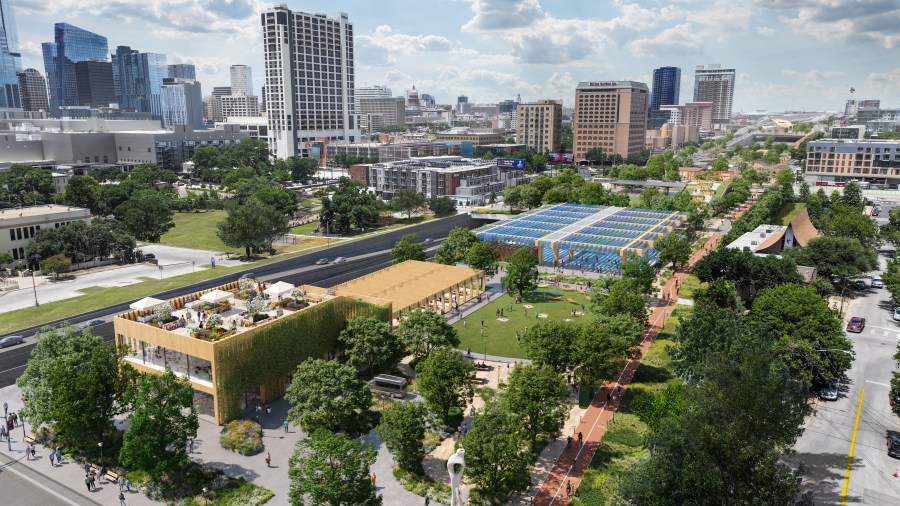AUSTIN (KXAN) — Later this fall, Austin city leaders will weigh in on the vision plan and funding commitments for a massive project adding highway coverings to the soon-to-be-expanded Interstate 35.
Austinites got their first preview on some updated conceptual renderings at an Our Future 35 open house Saturday. Up to 30 acres’ worth of event space, artwork, play areas and trails were just some of the ideas floated following community input, with individualized amenities for each cap being considered.
City transportation leaders with Our Future 35 — the program behind the ‘cap and stitch’ project — told KXAN last month the Our Future 35 vision plan will be presented to Austin City Council on Nov. 7 for a possible vote and adoption. Later in November, Our Future 35 team leaders are expected to return to council for an additional discussion on funding commitments needed with the Texas Department of Transportation.
Both the city of Austin and the Downtown Austin Alliance (DAA) are behind the Our Future 35 program — an effort that has been years in the making, the DAA’s chief program officer Melissa Barry told KXAN Wednesday.
“The Downtown Austin Alliance has been a champion for capping and stitching I-35 ever since our [Urban Land Institute] panel recommended this approach back in 2019,” she said. “But we’re actually at this moment right now where we have concepts and renderings coming together, and it’s a really important milestone that reflects years of community dialog and co-creation.”
With the vision for the program materializing more tangibly, Barry noted now is a “critical” time for identifying funding to advance the project forward. She said the DAA has studied many counterpart projects in Texas and beyond, adding a wide range of funding structures have been utilized for those programs.
It’s an effort that also comes with an ambitious price tag. Richard Mendoza, director of the Austin Transportation and Public Works Department, told KXAN in the spring the project could cost anywhere from $600 million to $800 million to fully construct the decks as well as the amenities on top.
City officials have already secured a $105.2 million federal grant in March for the program, as well as submitted a $193 million loan request with the State Infrastructure Bank for additional funds. Other funding mechanisms floated at the time included public-private partnerships, tax increment financing districts or a possible bond election.
“I think that one of the most important pieces of this process right now for everyone will be to recognize how iterative it needs to be to move forward. So as we continue to refine cap designs, they’re going to need to be calibrated with an understanding of the costs of operating and managing the spaces, but also with the potential to bring in funds to help offset the costs,” she said. “I think there’s no sort of magic answer to how these projects get funded, but the ability to be flexible and nimble and iterate the design with the funding strategy and the long-term operations and management of the project is really critical.”
Some success stories at similar capped projects, such as the Klyde Warren Park in Dallas, established a conservancy and developed the highway caps via public-private partnerships. Barry stressed the value of incorporating the business and philanthropic communities with the public sectors to maintain momentum of project development.
The creation of these caps is an integral part of robust development work already underway in the downtown sector, Barry added. Between the onboarding of the Project Connect light rail system in a few years time, the overhaul of the Austin Convention Center and the Waterloo Greenway, she said the corridor will be redefined in several years’ time.
“There’s so much investment that’s already taking shape on the east side of downtown. It’s going to look a lot different in 10 years,” Barry said. “And the I-35 cap and stitch is a critical piece of that puzzle. So what we currently see as this barrier is now going to be not only an asset, but it’s going to connect people to all of these new investments that are taking place in downtown.”



